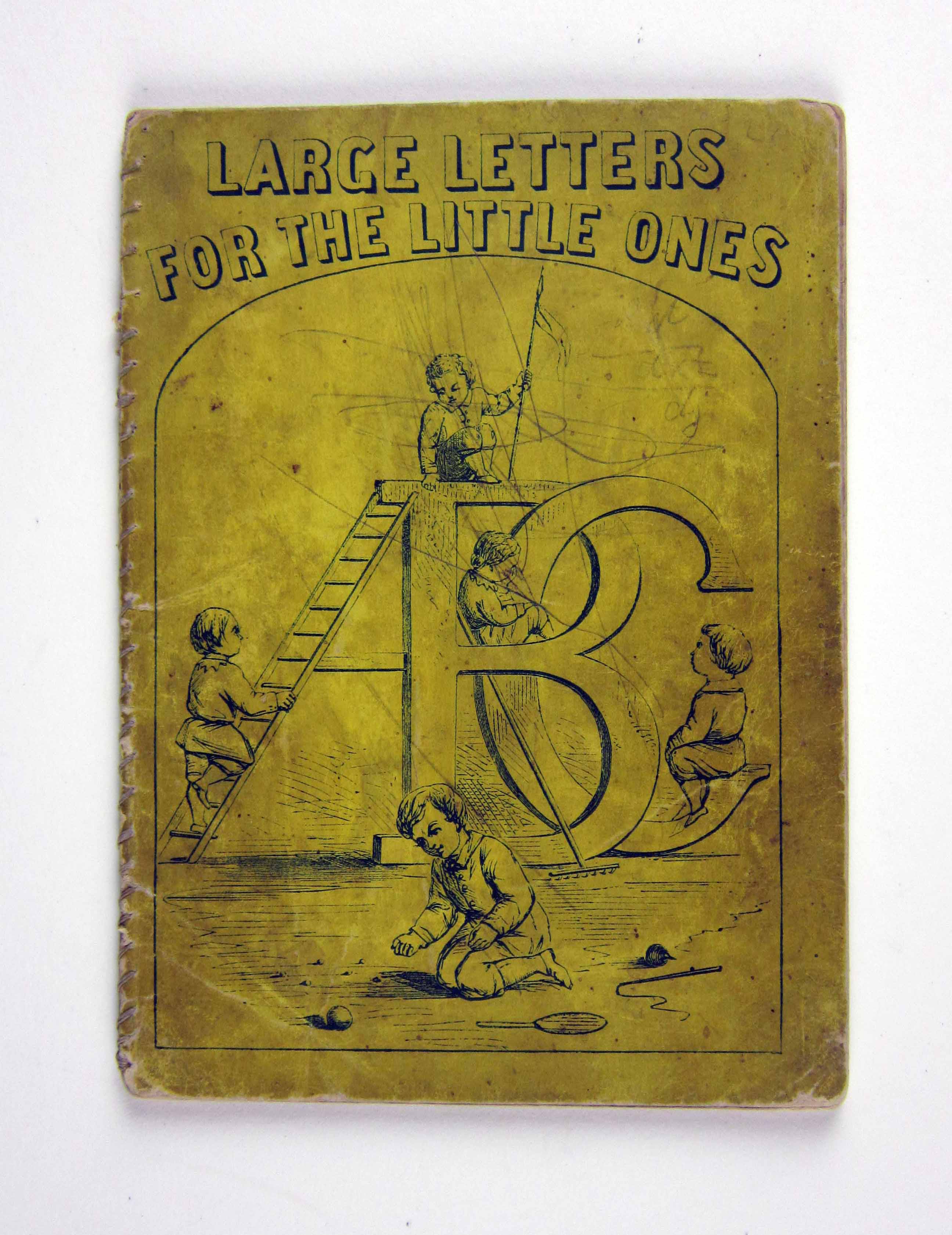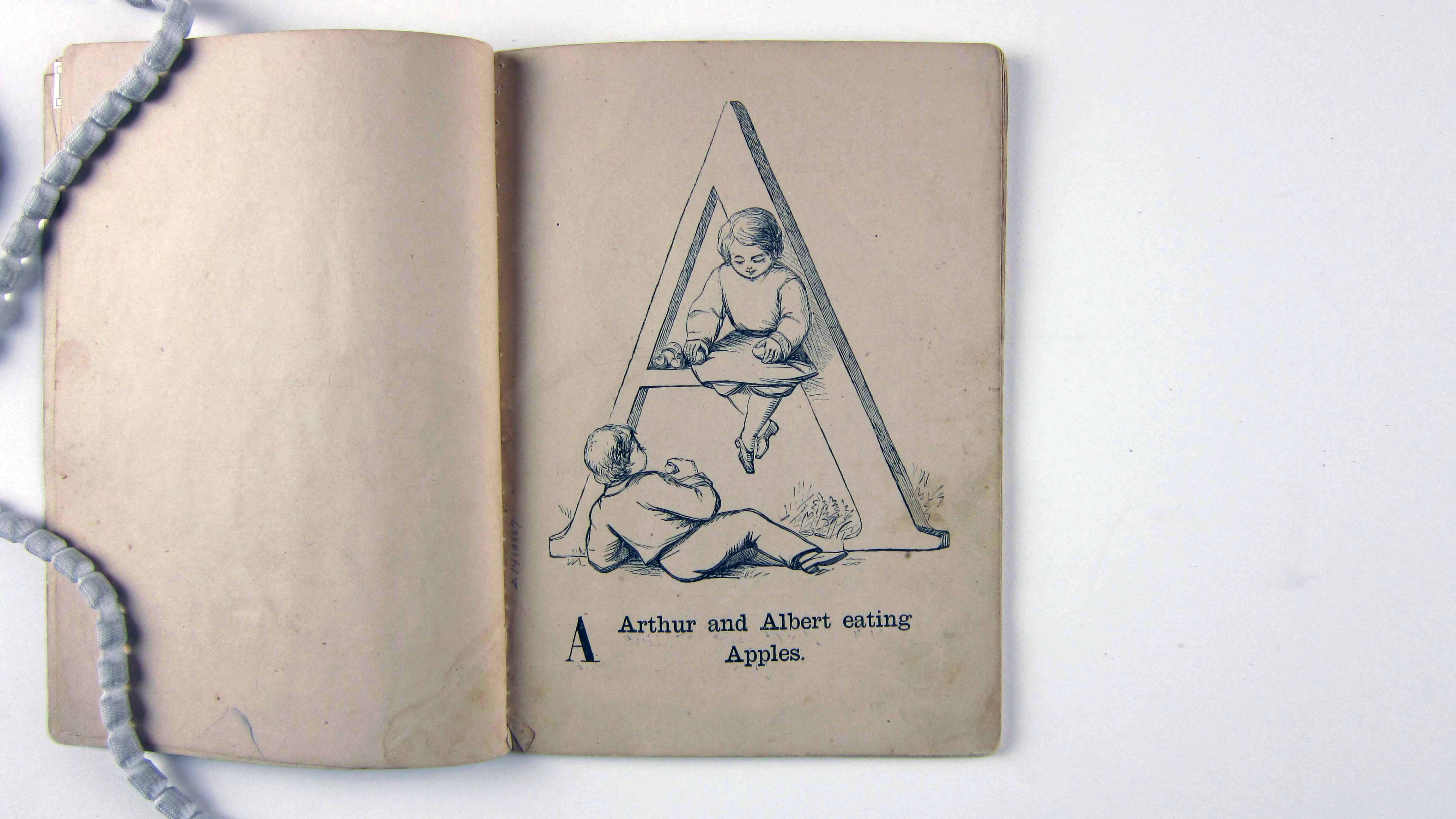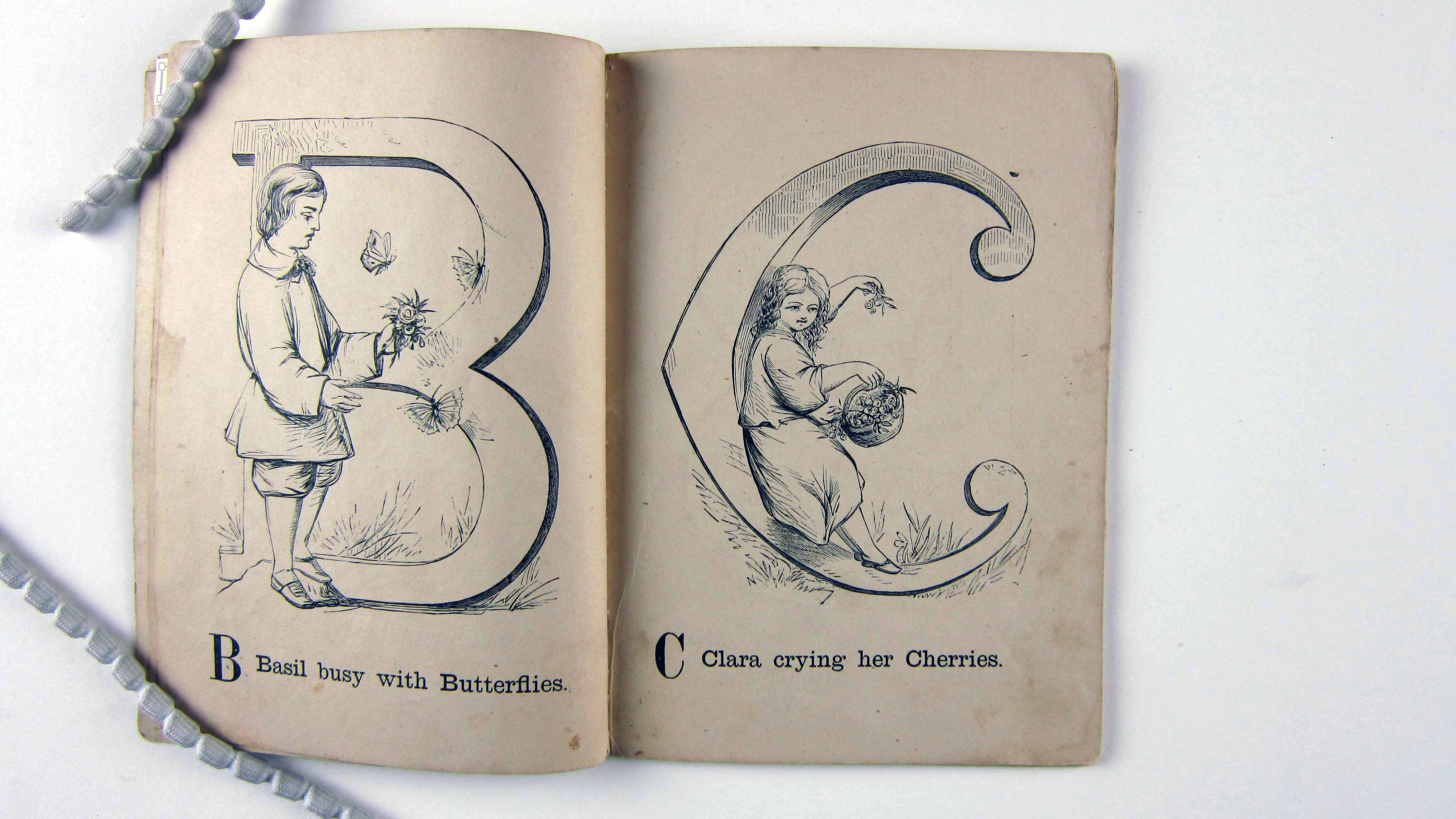

Alphabet books offer a vivid insight into the history of literacy and culture, as well as concepts of childhood. The Children's Book Collection at UCLA contains a rich array of these materials, some well-worn and much-used, some still bright and fresh. Each is a gem of print production and graphical imagery from another time and place. Though the history of alphabet books continues to the present, this exhibit focuses on the works in our collections published between 1700 and 1900, including horn books, primers, works of didacticism and seriousness, whimsy and play.
2. A Jumble ABC
3. A Little Pretty Pocket-Book
4. A New Lottery Book of Birds And Beasts
5. A Pretty Play-Thing for Children of All Denominations
8. ABC of Objects for Home And School
10. ABC with Pictures & Verses
12. Alphabet Et Instruction Pour Les Enfans
16. Dolly's ABC Book
17. Flora's ABC
18. Home ABC
22. Hornbook C. 1700
23. Large Letters for the Little Ones
24. Little ABC Book
25. Little People: An Alphabet
26. Martin's Nursery Battledoor
27. Mother Goose ABC
28. My Darling's ABC
29. Orbis Sensualium Pictus Quadrilinguis
30. People of All Nations: A Useful Toy for Girl Or Boy
31. Picture Alphabet
32. Pretty ABC
33. Railway ABC
34. Rusher's Reading Made Most Easy
38. The Alphabet of Old Friends
40. The Amusing Alphabet for Young Children Beginning To Read
42. The Child's Christian Education
45. The Easter Gift
47. The Favorite Alphabet for the Nursery
49. The Franklin Alphabet And Primer
51. The Golden ABC
55. The Moral And Entertaining Alphabet
57. The Old Testament Alphabet
59. The Picture Alphabet for Little Children
62. The Sunday ABC
63. The Union ABC
64. The Young Child's ABC, Or, First Book
65. Tom Thumb's Alphabet: Picture Baby-Books
67. Warne's Alphabet And Word Book: with Coloured Pictures
68. Wood's Royal Nursery Alphabet
Title Large Letters for the Little Ones

<


Full description In this book the alphabet is depicted with young children performing activities associated with each letter. The letters serve as an architectural framework as some of the children sit, lean, lie, and stand on the letters as if they are actual physical entities. The overall tone of this book is sweet, calm, and idyllic, reflecting the notions of childhood and the expectations of child behavior during the 19th century.
Literacy Simple depictions of the letters with children and accompanying verses requires the reader to know how to read, but not at a highly advanced reading level. The book does require a certain level of graphical literacy. Since the depicted letters serve as an architectural framework for the children, a reader would have to understand the unrealistic proportions and existence of the letters in a physical reality. A child would attain this graphical literacy through time and exposure to such images.
Childhood The quiet and idyllic nature of the book reflects the Romantic notions of children and childhood during the late 18th to the mid-19th century. The images are vignettes, creating an untarnished and fantasy setting away from the harsh realities of the world. Within the vignettes the children are illustrated to appear doll-like, with innocent and sweet faces. The children quietly pass the time with leisure activities such as watching sailboats and playing with dolls. Through the book's illustrations the Romantic Era's notions of angelic children and the innocence of childhood are conveyed.
Iconography Looking at the illustrations in this book viewers are able to see how middle to upper class children were pictured during the 19th century. Children of the upper and middle class had the ability to engage in leisure activities unlike children of the lower class who were expected to work once they were old enough.
Most of the figures in the book are doing relatively passive activities such as reading, sitting, politely talking to one another, etc. None of the children are fighting or running around. A few of the children are playing, but they are doing quiet activities such as observing butterflies or collecting flowers.
The overall quiet and idyllic tone of the images adds to the leisurely nature of the activities depicted. However, most of the children do not directly gaze at the viewer and many of the figures have downcast eyes. The indirect gazes of the children reflect the expectations that children, of any class, were supposed to be obedient, submissive, and well behaved.
Production This book was published in 1865 by Hurd & Houghton, and is one of the many publications produced by this New York company. Henry Oscar Houghton started working for Freeman & Bolles and eventually took over the business in 1852 and renamed the company Riverside Press. In 1864, Houghton partnered with Melanchton Hurd and established Hurd & Houghton. The publishing firm grew quickly and success led to an increased workforce in order to accommodate new orders. Today, Hurd & Houghton is known as Houghton Mifflin and continues to publish educational materials such as textbooks, assessments, fiction, and non-fiction books.
Creator
Publisher Hurd & Houghton
Publication place 401 Broadway Cor. Walter Street, New York
Date 1865
UCLA Call Number CBC Z1033.H8 L37 1865
Repository UCLA Charles E. Young Research Library, Dept. of Special Collections
Dimensions 19 cm
Technologies of production Printing
Additional Information Printer note: cor. Walker St.
Caption